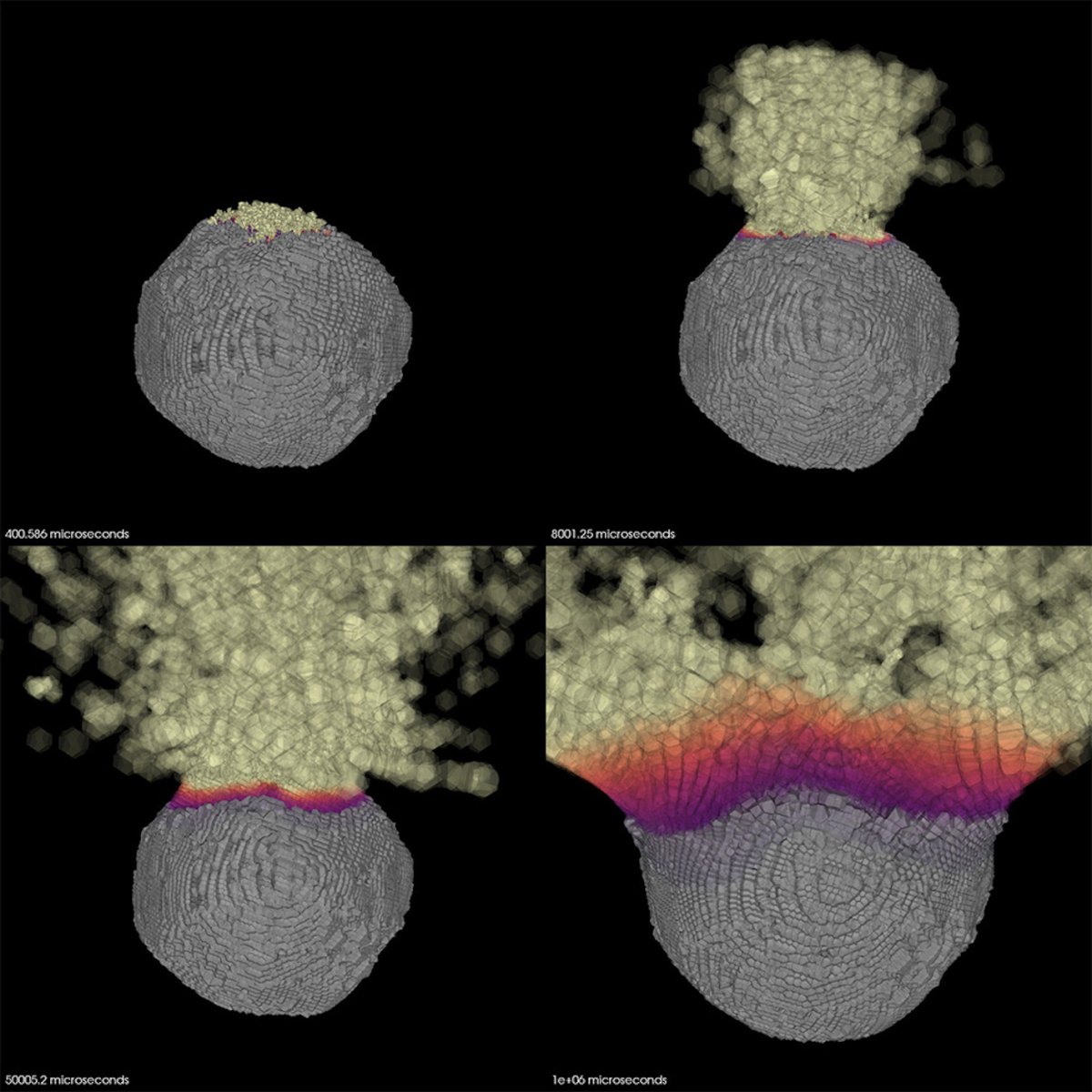Scientists at a United States research institute have simulated using a nuclear bomb to defend Earth against a catastrophic asteroid impact.
While it sounds like a strategy taken straight from a science fiction film, deploying a nuclear device has been proposed as one possible solution for protecting our planet in the event that a large and potentially dangerous asteroid—or other near-Earth object—is found to be on a collision course with our world.
These events are rare; no known NEO currently poses a significant risk of hitting Earth in the foreseeable future, according to NASA. However, this does not rule out that such an impact could occur in the future, particularly given the potential risks of NEOs that have yet to be detected.
A large asteroid impact would be capable of causing destruction on a regional to global scale, depending on the amount of energy released.
However, given sufficient warning time, modern technology could be used to avert disaster. One strategy that has been discussed by researchers involves detonating a nuclear explosive device to deflect the asteroid when it is located millions of miles away so that it veers off course, harmlessly missing Earth. In some cases, an NED could also be used to “disrupt” or break apart an asteroid into smaller, less dangerous fragments with the intention that most of these would miss our planet as well.
These strategies have never been tested in real life, which means researchers have to rely on computer models to study their potential effectiveness.
However, predicting the effectiveness of a potential nuclear deflection or disruption mission depends on accurate simulations that are difficult to conduct. In an attempt to address this, researchers from the Lawrence Livermore National Laboratory (LLNL) in California have developed a new modeling tool for assessing the potential use of a nuclear device against an asteroid, which has been described in a study published in the Planetary Science Journal.
“In the event of an incoming asteroid, decision-makers will need accurate information on what options are available to them immediately. However, generating data on a nuclear mitigation mission requires running simulations, which are deeply complicated and resource-intensive problems,” LLNL physicist Mary Burkey, who led the research, told Newsweek.
“Even simulating the effect of a nuclear device’s X-rays on an approximate, highly-simplified, spherical asteroid could consume weeks of precious time. A faster and more versatile method of simulating nuclear mitigation missions was needed.”
iStock
The product of the latest research is a model that approximates everything that happens as the X-rays produced by the nuclear device deposit their energy on the surface of the asteroid using a simplified but functional model.
“Without the simplified model, the X-ray energy deposition process is extremely expensive in terms of computer resources, and the required physics simulations must be taken into account,” Burkey said. “Using the paper’s simplified model instead of simulating the X-rays from scratch drastically reduces the problem’s complexity and the time required to simulate a nuclear mitigation mission.”
Using the new model defined in the paper, scenarios involving a simple, spherical asteroid can be run in less than a day with substantially fewer computer resources when a quick answer is needed, according to Burkey.

Mary Burkey/Lawrence Livermore National Laboratory
“For more detailed simulations, and with larger scales available for exploration, our development efforts can now be directed towards incorporating realistic features in our simulations,” Burkey said.
“Incorporating as many realistic details as possible is crucial to ensuring our mission-effectiveness estimations are accurate. Thus when a planetary defense emergency does arrive, we can provide our decision-makers fast and reliable information.”
In such a situation, this information could help to prevent an asteroid impact, protect essential infrastructure and save lives, according to the researchers.
Uncommon Knowledge
Newsweek is committed to challenging conventional wisdom and finding connections in the search for common ground.
Newsweek is committed to challenging conventional wisdom and finding connections in the search for common ground.


